Sifting Through the Past at Kulen Mountain and Phnom Penh, Cambodia
Exploring Cambodia's painful history while visiting some of its most significant sites
On my last day in Siem Reap, I went on a tour of Kulen Mountain. I don’t really enjoy doing guided tours of the sort where you’re corralled into a van with a bunch of other tourists, but this seemed worth it, so I went.
The highlight of the tour was our guide, who spoke with surprising candidness about the state of the Cambodian government. He explained that Cambodia’s current king had all but vacated the throne — now he’s a ballet dancer in Prague with his gay lover, he explained. (The king has denied this allegation, though he did come out in support of LGBTQ+ rights in the early 2000s).
In the meantime, the current ruler of Cambodia is Hun Manet — the son of Hun Sen, who served as prime minister from 1985 to 2023. Hun Sen is widely viewed as deeply corrupt, and many blame him for the country’s intense poverty. During the pandemic, he apparently used millions of dollars in government money to throw himself a party, where he bought himself a million-dollar watch while people all over the nation starved. Today, all the money from Angkor Wat — which is not cheap at $60 for a three-day pass — goes directly into his hands. Unsurprisingly, he is connected to the Khmer Rouge.
Our guide also explained that he worked two jobs in order to support his brother and family. He also later told us that his girlfriend had died after getting food poisoning from an oyster in Vietnam and then receiving inadequate care from a doctor who, he said, had essentially been able to pay the government for a medical license.
As we traveled to the mountain, he gave us a great deal of background information about the forces that led to the Khmer Rouge’s rise, which I would learn more about later in Phnom Penh as I walked through the Tuol Sleng prison and the Killing Fields themselves. The Khmer Rouge was the product of an extremely bastardized and distorted version of Communism, which its founders — including Pol Pot — had first begun to engage with as students in Paris. They’d brought it back to a highly unstable Cambodia, where tensions were already high.
There, controversy had struck the royal family after it was revealed that the king’s wife — who happened to be Vietnamese, and who he’d married for love — had been colluding with the Viet Cong, despite Cambodia’s proclaimed alliance to the United States during the Vietnam War. This was part of what led the US to bomb of Cambodia, which created space for heavy anti-royal and anti-Western sentiment. Pol Pot and his entourage were able to utilize this unrest to institute a bizarre form of agrarian essentialism. Essentially, though they were members of the bourgeoisie themselves, the founders decided to force every city-dweller to leave to become members of an agricultural, homogenous Communist state.
The carnage started immediately, with the regime murdering anyone who they felt could oppose them, including babies from wealthy or academic or intellectual families. Anyone with glasses was a target, as they were perceived as intellectuals.
Later, in Phnom Penh, I visited Tuol Sleng, a prison where thousands of people were tortured and killed for being traitors to the regime. I have thought a lot about how and when to write about tragedy and brutality, and I am not going to write about that place in detail here, but you can certainly look it up. But I will say that the whole space was weighted down by a deep sadness, as if the trees themselves were weeping.
Eventually, the Vietnamese army came in and stopped the regime. But the country had lost between 1.5 to 3 million people at that point.
As I learned more and more about the genocide, I began to seek out more information about Pol Pot’s ideology. How could someone’s ideas and visions become so unfathomably, brutally twisted? This could only have been a movement helmed by members of the bourgeoise, I decided — people who had no idea what agrarian life actually is like or how difficult it would be for city-dwellers and intellectuals to abandon their lives for backbreaking work in the fields — people with no real connection to community, people whose rage overcame all sense of empathy. Of course, the abhorrent violence is difficult to fathom, and there is a gap in the numbers and in my understanding of the reality of what happened.
But it did happen, and it’s part of the country’s story. At the Killing Fields, I walked past a tower full of skulls and a tree soldiers used to bash infants’ heads into. The soldiers who initially discovered the space had found bits of brain on the bark.
This is what happens when violence is seen as a necessary evil for political gain, and when ideology trumps humanity. Pol Pot’s name stands for Political Potential, and I am sure he believed every death was worth his dream. He even grew old and never admitted his guilt.
But Comrade Duch, the official who ran the Tuol Sling prison, eventually did admit his guilt. “Whenever I recall the past, I am deeply pained and I am racked with remorse,” he told the Cambodian Supreme Court in 2009. “Though I acted out of respect for Angkar’s orders, I am still responsible for the crimes.”
All this, plus learning about the Vietnam War in the following days in Ho Chi Minh City, eventually my essay on how God — or any sort of order or guiding force in the universe at all, if there is one — can allow all of this suffering.
Coming off a few months of deep spiritual work, I couldn’t help but try to see all of this in the context of all I’d been learning about intention and the divine. Eventually I was forced to conclude that there are some things about this world I cannot understand.
Today, grasses grow over the bits of bone on the Killing Fields. Rivers sparkle, and birds sing, and trees spread their branches above the mass graves. The country grows, as all things do. Its resilience is a beacon of possibility. The joy of the people who live there — despite the trauma and horror they have witnessed — is also evidence of the resilience of the human spirit.
And yes, of course, generational trauma runs incredibly deep and pain still weaves its way through in tangible and intangible ways. It is important to remember history so we do not repeat it.
It is important to look at the worst sins of humanity, and to notice where we might be creating space for them in our own world and times.
I am not qualified to speak on the Cambodian genocide and its legacy. But in my opinion, when we value ideology above human life, and when we let go of basic care and empathy for others in exchange for political goals, that is when we begin to lose our humanity.
By the time my Kulen Mountain guide had finished telling us the story of the Khmer Rouge and his own family, it had grown dark. We’d spent the afternoon at a waterfall, where thick clouds of colorful butterflies spun over a glittering river — it looked straight out of a stock image of paradise. We’d visited a monastery, climbing up to see a statue of the Buddha carved from a rock face, hitting a gong that seemed to bellow with a depth channeled from the heart of the earth. And we’d taken a boat down a floating river, with our guide promising that the money from that tour went to the villagers, which I hoped was true.
Out on Tonle Sap Lake, where all the rivers in northern Cambodia flow from, we watched the sun sink over the mangroves as women rowed by us hawking snacks and children waded their ways back to their stilted houses on the river.
I thanked our guide at the end, though I didn’t really have the proper words to address what I’d just heard. He seemed so kind and genuine, and so truly passionate about the story of his country. It was a powerful story and we all were changed by it. There was a weightiness to the group of tourists as we left the boat and headed home in the night.
He wanted to share it with us — the story of his country’s tragedy and his own — and he did it every day, many times a week, before going home to work at his second job until dawn.
And so I am sharing it with you here.

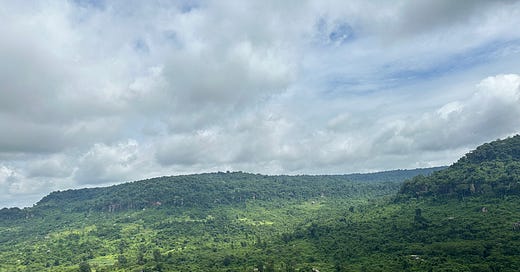



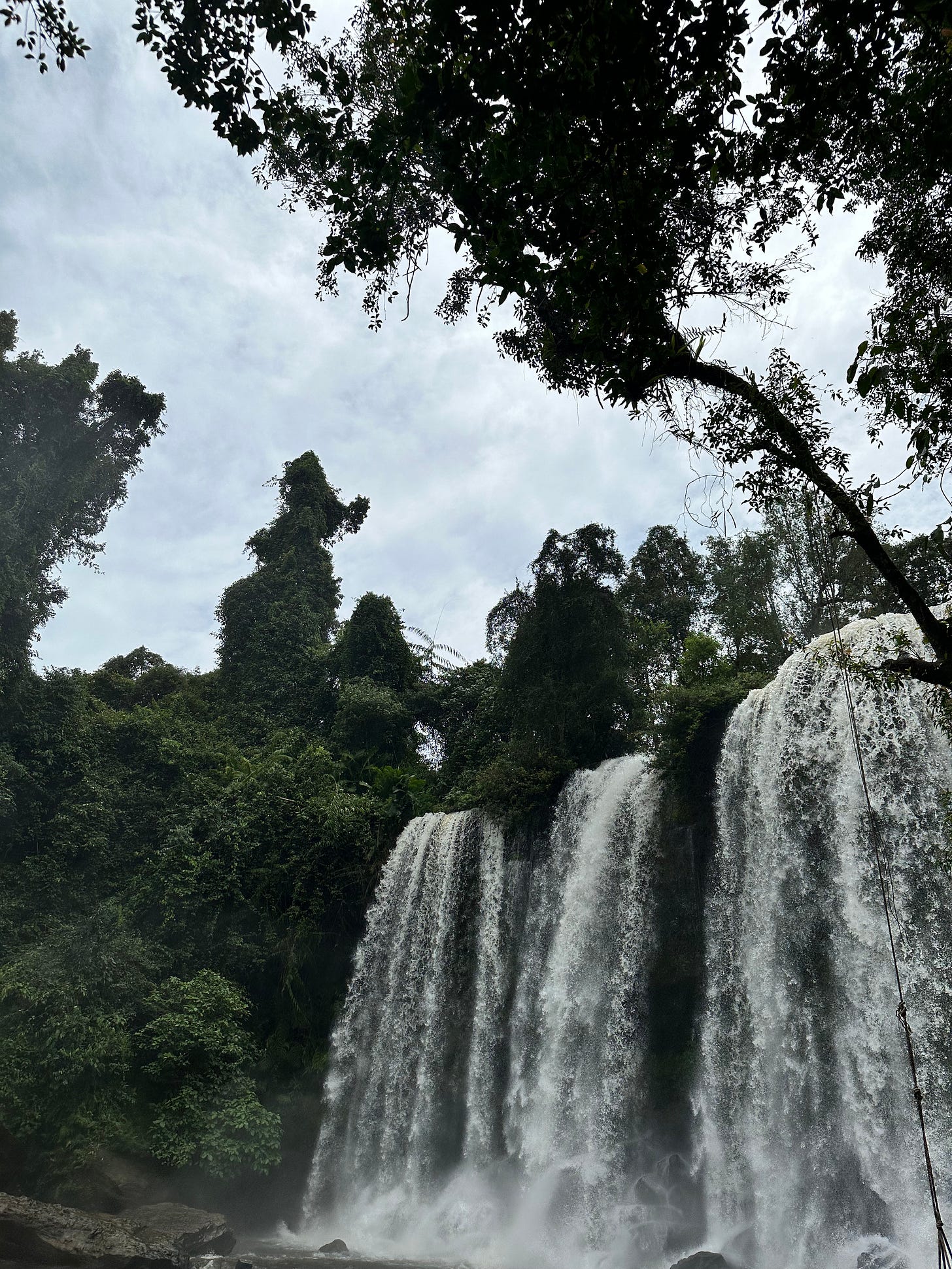
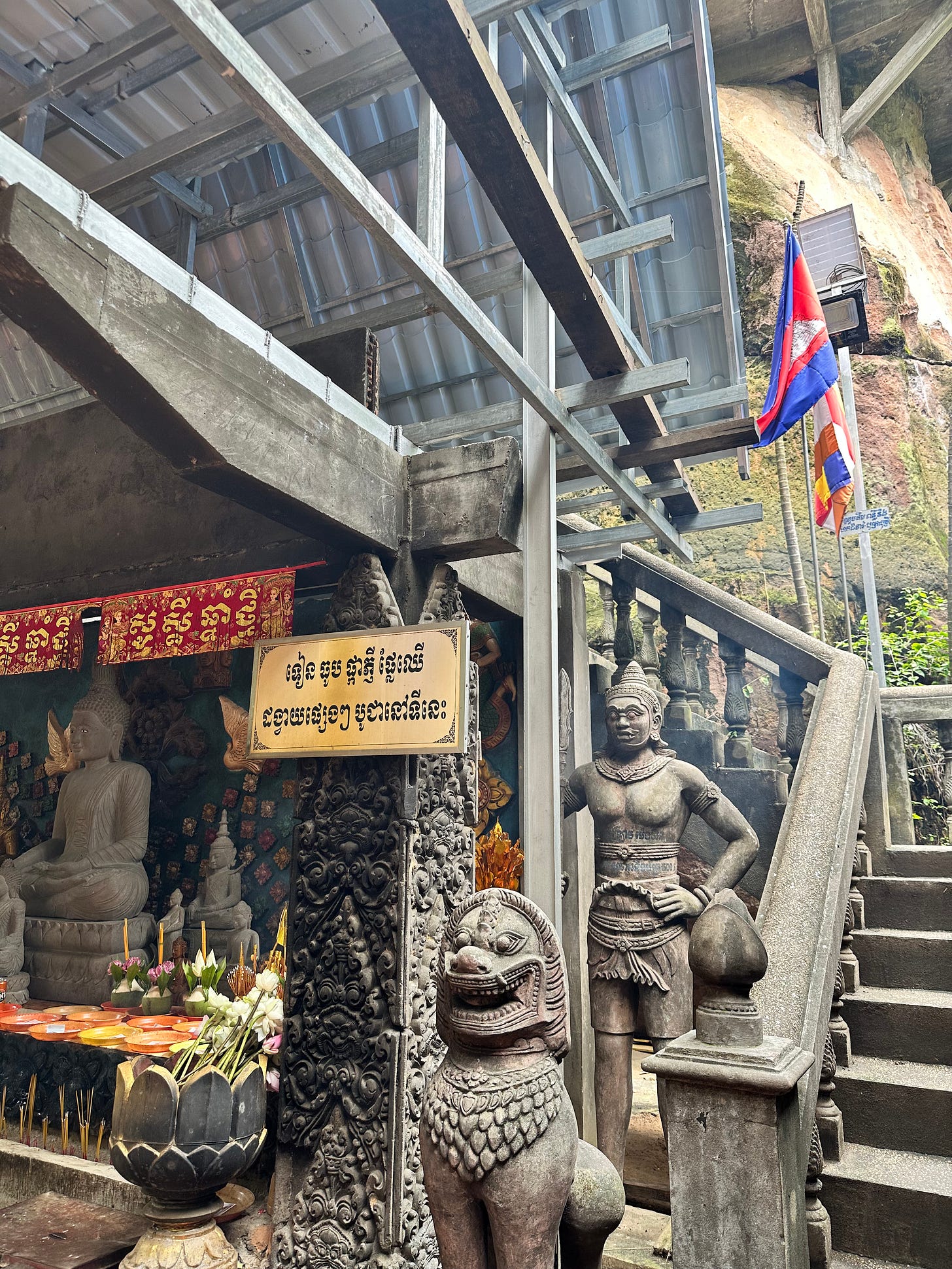
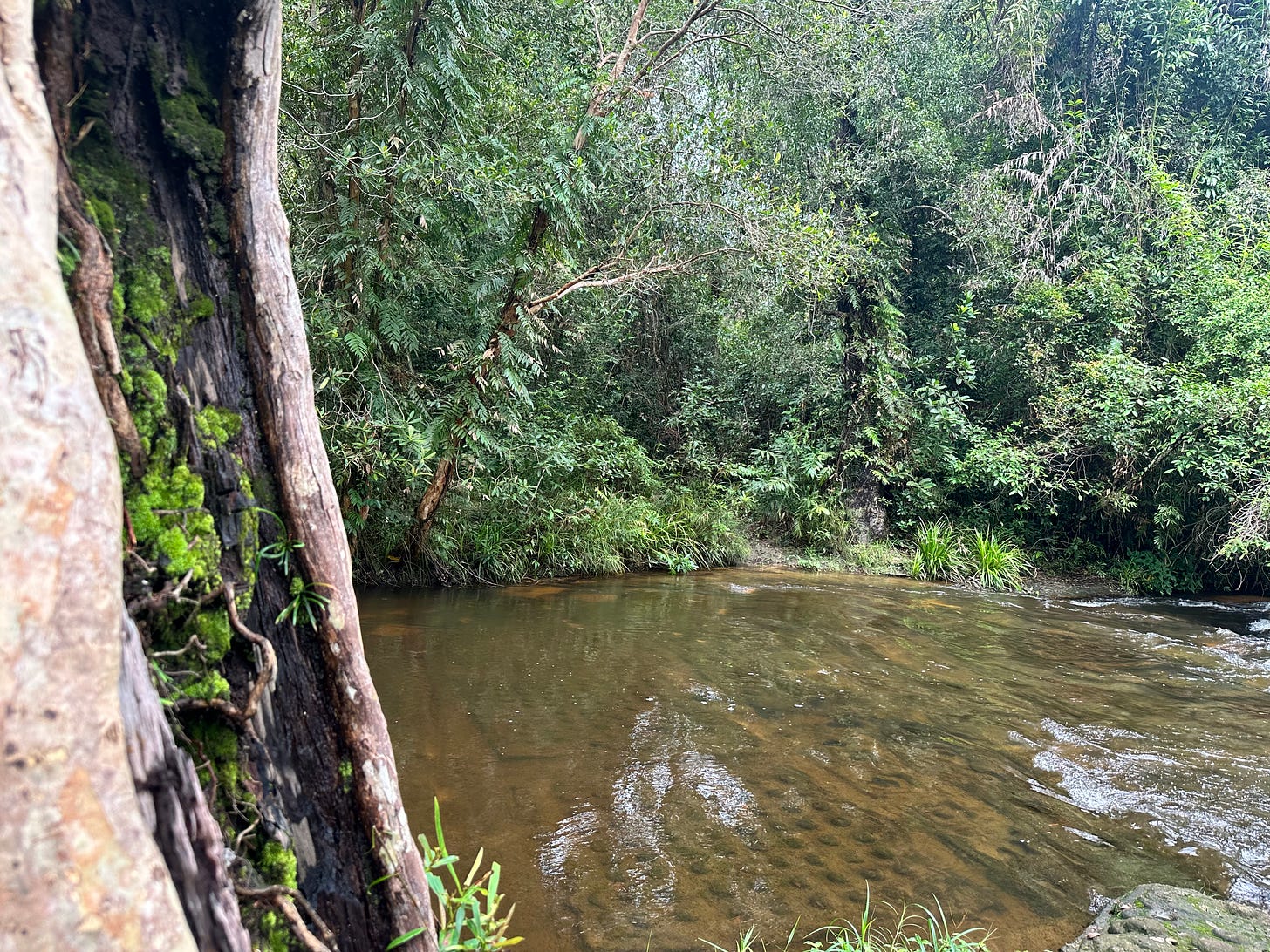
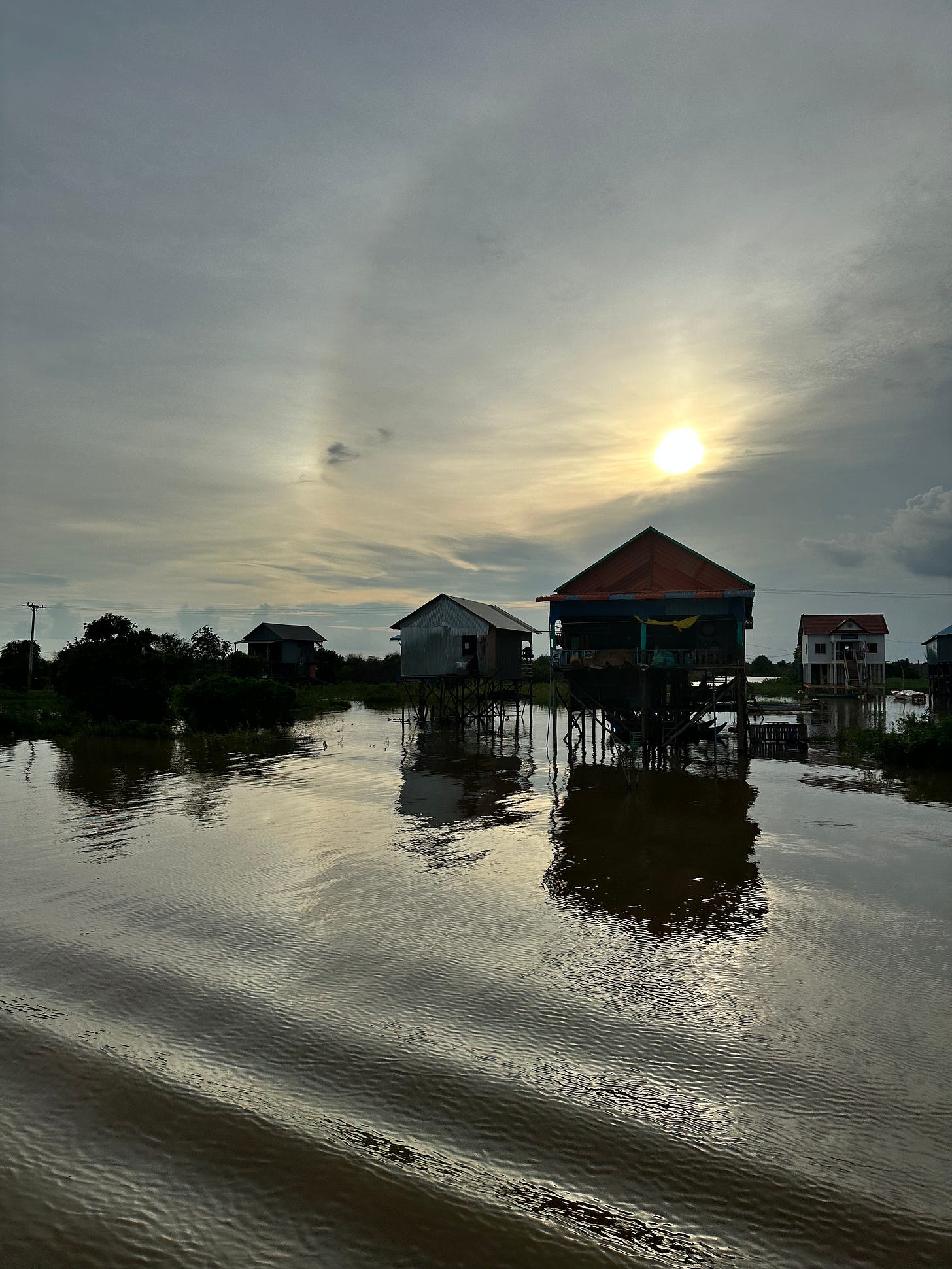

As you said, there is simply no understanding. But it must be told, and learned from. Thank you!
Truly devastating. And when we were there we couldn't hike without a guide because so many landmines remained.